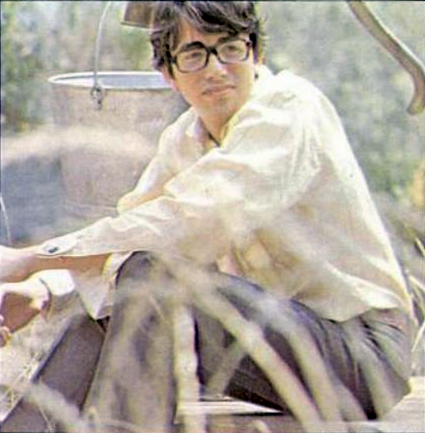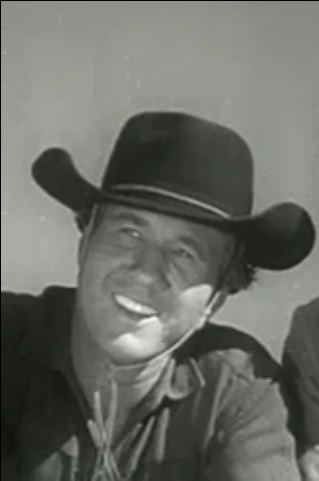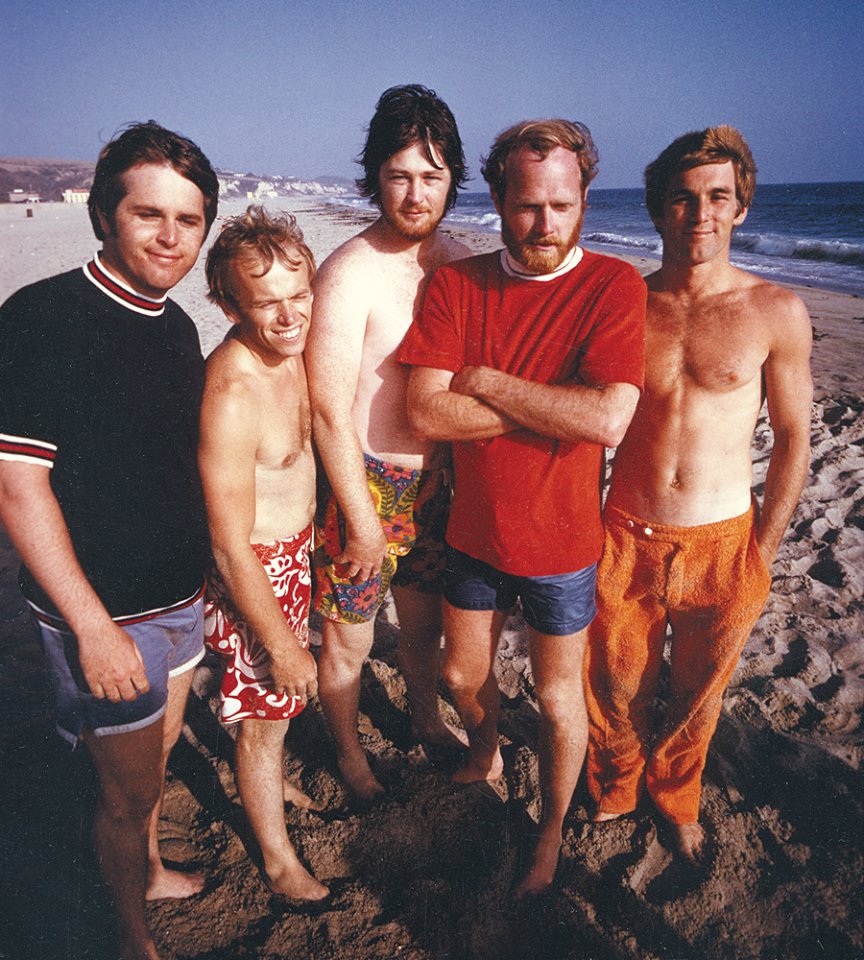|
Smiley Smile
''Smiley Smile'' is the twelfth studio album by the American rock band the Beach Boys, released on September 18, 1967. Conceived as a simpler and more relaxed version of their unfinished ''Smile'' album, ''Smiley Smile'' is distinguished for its homespun arrangements, " stoned" aesthetic, and lo-fi production. Critics and fans generally received the album and its lead single, "Heroes and Villains", with confusion and disappointment. The album reached number 9 on UK record charts, but sold poorly in the U.S., peaking at number 41—the band's lowest chart placement to that point. Following principal songwriter Brian Wilson's declaration that most of the original ''Smile'' tapes would be abandoned, the majority of the recording sessions lasted for six weeks at his makeshift home studio using radio broadcasting equipment, a detuned piano, electronic bass, melodica, found objects for percussion, and a Baldwin theater organ. The unconventional recording process juxtaposed an ex ... [...More Info...] [...Related Items...] OR: [Wikipedia] [Google] [Baidu] |
The Beach Boys
The Beach Boys are an American Rock music, rock band formed in Hawthorne, California, in 1961. The group's original lineup consisted of brothers Brian Wilson, Brian, Dennis Wilson, Dennis, and Carl Wilson, their cousin Mike Love, and their friend Al Jardine. Distinguished by their vocal harmonies, adolescent-oriented lyrics, and musical ingenuity, they are one of the most influential acts of the rock era. The group drew on the music of Traditional pop, older pop vocal groups, 1950s rock and roll, and black R&B to create their unique sound. Under Brian's direction, they often incorporated classical music, classical or jazz elements and Recording studio as an instrument, unconventional recording techniques in innovative ways. The Beach Boys formed as a garage band centered on Brian's songwriting and managed by the Wilsons' father, Murry Wilson, Murry. Jardine was briefly replaced by David Marks during 1962–1963. In 1963, they enjoyed their first national hit with "Surfin' U.S ... [...More Info...] [...Related Items...] OR: [Wikipedia] [Google] [Baidu] |
Smile (The Beach Boys Album)
''Smile'' (stylized as ''SMiLE'') is an unfinished album by the American rock band the Beach Boys, conceived as the follow-up to their 1966 album ''Pet Sounds''. The project—a concept album involving themes of Americana (culture), Americana, humor, youth, innocence, and the natural environment, natural world—was planned as a twelve-track LP assembled from modular fragments, the same editing process used on their single "Good Vibrations". After a year of recording, the album was shelved and a downscaled version, ''Smiley Smile'', was released in September 1967. Over the next four decades, few of the original ''Smile'' tracks were officially issued, and the project became regarded as the most legendary unreleased album in popular music history. The album was produced and primarily composed by Brian Wilson with guest lyricist and assistant arranger Van Dyke Parks, envisioning the project as a ''Rhapsody in Blue''–influenced riposte to contemporary rock trends and the British ... [...More Info...] [...Related Items...] OR: [Wikipedia] [Google] [Baidu] |
Gettin' Hungry
"Gettin' Hungry" is a song by the American rock band the Beach Boys from their 1967 album ''Smiley Smile''. Credited on the label to Brian Wilson and Mike Love, it was released as a single on August 28, 1967, the second and last released on the original iteration of Brother Records. Background Asked for comment, Wilson said that he "just thought it would be a good single". It is one of the few songs on ''Smiley Smile'' that lack a definite connection to the aborted ''Smile'' project. Recording "Gettin' Hungry" was recorded at Brian Wilson's Bellagio home studio on July 14, 1967. Reception ''Billboard'' reviewed "Gettin' Hungry" as an "unusual piece of material — as off-beat as their current 'Heroes and Villains' smash. Should prove to be an important chart item." ''Cash Box'' said that the "use of abrupt changes of speed, overwhelming organ atmosphere and the sort of 'soul' sound that is Beach Boys" make the song "distinctive." Among biographers, Byron Preiss characterized ... [...More Info...] [...Related Items...] OR: [Wikipedia] [Google] [Baidu] |
Heroes And Villains
"Heroes and Villains" is a song by the American rock band the Beach Boys from their 1967 album ''Smiley Smile'' and their unfinished ''Smile (The Beach Boys album), Smile'' project. Written by Brian Wilson and Van Dyke Parks, Wilson envisioned the song as an Old West-themed musical comedy that would surpass the recording and artistic achievements of "Good Vibrations". The single was Brother Records' first release. While it failed to meet critical and commercial expectations, it was nevertheless a hit record, peaking at number 12 in the U.S. and number 8 in the UK. The song was Wilson and Parks' first collaboration. Parks characterized the song as "historically reflective" and a "visual effort" that was meant to match the ballads of Marty Robbins. He said the lyrics were based on the early history of California, including references to the involvement of the Spanish and Indigenous peoples of the Americas, American Indians. Some accounts suggest that the song developed partly fro ... [...More Info...] [...Related Items...] OR: [Wikipedia] [Google] [Baidu] |
Wild Honey (album)
''Wild Honey'' is the thirteenth studio album by the American Rock music, rock band the Beach Boys, released on December 18, 1967, by Capitol Records. It was the group's first foray into soul music and was heavily influenced by the Rhythm and blues, R&B of Motown and Stax Records. The album was the band's worst-selling at that point, charting at number 24 in the US. Lead single "Wild Honey (The Beach Boys song), Wild Honey" peaked at number 31, while its follow-up "Darlin' (The Beach Boys song), Darlin" reached number 19. In the UK, the album peaked at number seven. The album's sessions began immediately after the recording of ''Lei'd in Hawaii'', a failed live album, and the release of ''Smiley Smile'', their previous LP. Like ''Smiley Smile'', ''Wild Honey''s core instrumental combo consists of Electronic organ, organ, honky-tonk piano, and electric bass. The Beach Boys were inspired to regroup as a self-contained rock band, partly in response to critical assertions that they ... [...More Info...] [...Related Items...] OR: [Wikipedia] [Google] [Baidu] |
Paste Magazine
''Paste'' is an American monthly music and entertainment digital magazine, headquartered in Atlanta, Georgia, with studios in Atlanta and Manhattan, and owned by Paste Media Group. The magazine began as a website in 1998. It ran as a print publication from 2002 to 2010 before converting to online-only. History The magazine was founded as a quarterly in July 2002 and was owned by Josh Jackson, Nick Purdy, and Tim Regan-Porter. In October 2007, the magazine tried the "Radiohead" experiment, offering new and current subscribers the ability to pay what they wanted for a one-year subscription to ''Paste''. The subscriber base increased by 28,000, but ''Paste'' president Tim Regan-Porter noted the model was not sustainable; he hoped the new subscribers would renew the following year at the current rates and the increase in web traffic would attract additional subscribers and advertisers. Amidst an economic downturn, ''Paste'' began to suffer from lagging ad revenue, as did other m ... [...More Info...] [...Related Items...] OR: [Wikipedia] [Google] [Baidu] |
Wally Heider Recording
Wally Heider Studios was a recording studio founded in San Francisco in 1969 by recording engineer and studio owner Wally Heider. Between 1969 and 1980, numerous notable artists recorded at the studios, including Creedence Clearwater Revival, Jefferson Airplane, Crosby, Stills, Nash & Young, and The Grateful Dead. The studio changed ownership in 1980 and was renamed Hyde Street Studios, which is still in operation today. History Background Wally Heider had apprenticed with as an engineer and mixer at Bill Putnam's United Western Recorders studio complex in Hollywood in the early 1960s, after which he founded Wally Heider Recording with the opening of Studio 3 at 1604 N. Cahuenga Boulevard in Hollywood. Heider and his crew garnered a high reputation for top notch engineering that resulted in excellent studio and remote location recordings, including sessions with the Beach Boys and Crosby, Stills & Nash. In 1967, Heider assisted in the live recording of the Monterey Pop Festiva ... [...More Info...] [...Related Items...] OR: [Wikipedia] [Google] [Baidu] |
Theater Organ
A theatre organ (also known as a theater organ, or, especially in the United Kingdom, a cinema organ) is a type of pipe organ developed to accompany silent films from the 1900s to the 1920s. Theatre organs have horseshoe-shaped arrangements of stop tabs (tongue-shaped switches) above and around the instrument's keyboards on their consoles. Theatre organ consoles were typically decorated with brightly colored stop tabs, with built-in console lighting. Organs in the UK had a common feature: large translucent surrounds extending from both sides of the console, with internal colored lighting. Theatre organs began to be installed in other venues, such as civic auditoriums, sports arenas, private residences, and churches. Though there are few original instruments, hundreds of theatre pipe organs are installed in public venues throughout the world today, while many more exist in private residences. History Originally, films were accompanied by pit orchestras in larger houses, and pi ... [...More Info...] [...Related Items...] OR: [Wikipedia] [Google] [Baidu] |
Baldwin Piano Company
The Baldwin Piano Company is an American piano brand. It was once the largest US-based manufacturer of keyboard instruments and was known by the slogan, "America's Favorite Piano". , it has been a subsidiary of Gibson Brands, Inc. Baldwin ceased domestic production in December 2008, moving its piano manufacturing to China. History The company traces its origins to 1857, when Dwight Hamilton Baldwin began teaching piano, organ, and violin in Cincinnati, Ohio. In 1862, Baldwin started a Decker Brothers piano dealership and, in 1866, hired Lucien Wulsin as a clerk. Wulsin eventually became a partner in the dealership, which by then was known as the D.H. Baldwin & Company. The Baldwin Company became the largest piano dealer in the Midwestern United States by the 1890s. In 1889 or 1890, Baldwin vowed to build "the best piano that could be built" and subsequently formed two production companies: Hamilton Organ, which built reed organs, and the Baldwin Piano Company, which made pi ... [...More Info...] [...Related Items...] OR: [Wikipedia] [Google] [Baidu] |
Percussion
A percussion instrument is a musical instrument that is sounded by being struck or scraped by a percussion mallet, beater including attached or enclosed beaters or Rattle (percussion beater), rattles struck, scraped or rubbed by hand or struck against another similar instrument. Excluding Zoomusicology, zoomusicological instruments and the human voice, the percussion family is believed to include the oldest musical instruments.''The Oxford Companion to Music'', 10th edition, p.775, In spite of being a very common term to designate instruments, and to relate them to their players, the percussionists, percussion is not a systematic classificatory category of instruments, as described by the scientific field of organology. It is shown below that percussion instruments may belong to the organological classes of idiophone, membranophone, aerophone and String instrument, chordophone. The percussion section of an orchestra most commonly contains instruments such as the timpani, ... [...More Info...] [...Related Items...] OR: [Wikipedia] [Google] [Baidu] |
Found Object (music)
Found objects are sometimes used in music, often to add unusual percussive elements to a work. Their use in such contexts is as old as music itself, as the original invention of musical instruments almost certainly developed from the sounds of natural objects rather than from any specifically designed instruments. Use in classical and experimental music The use of found objects in modern classical music is often connected to experiments in indeterminacy and aleatoric music by such composers as John Cage and Karlheinz Stockhausen. However, it has reached its ascendancy in those areas of popular music as well, such as the ambient works of Brian Eno. In Eno's influential work, found objects are credited on many tracks. The ambient music movement which followed Eno's lead has also made use of such sounds, with notable exponents being performers such as Future Sound of London and Autechre, and natural sounds have also been incorporated into many pieces of new-age music. Also other bu ... [...More Info...] [...Related Items...] OR: [Wikipedia] [Google] [Baidu] |





